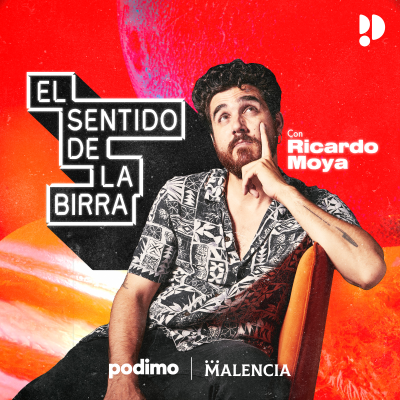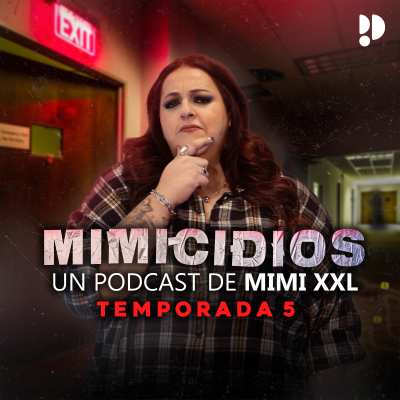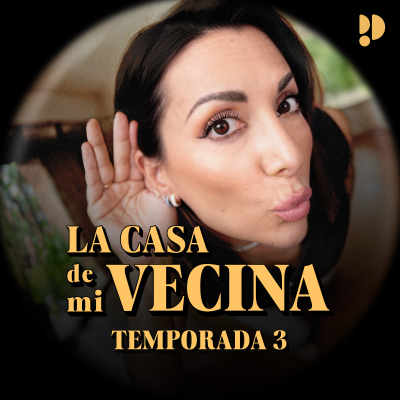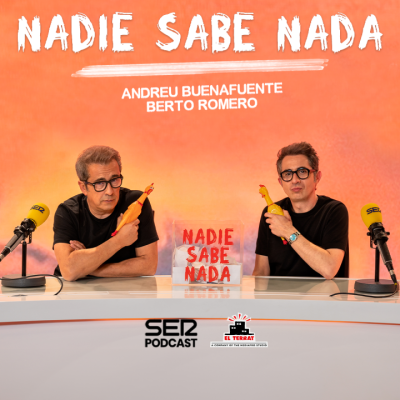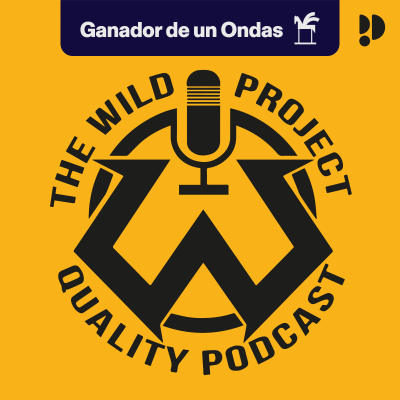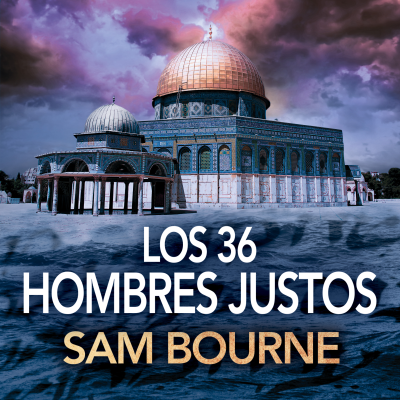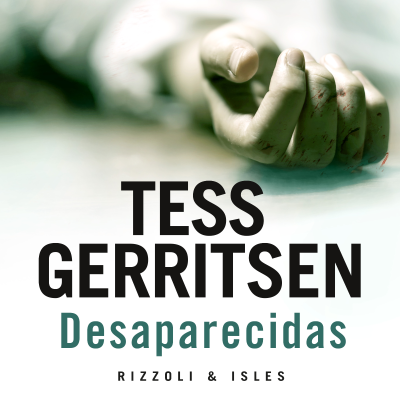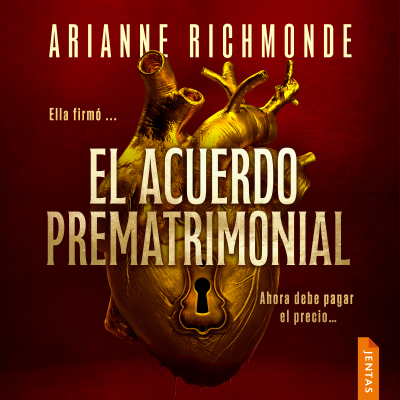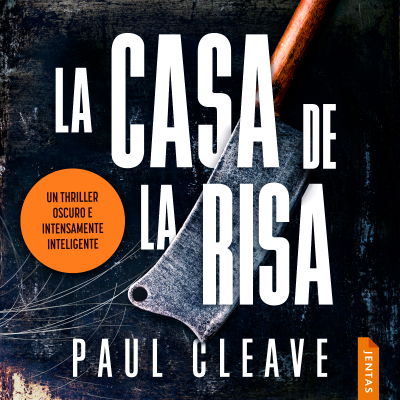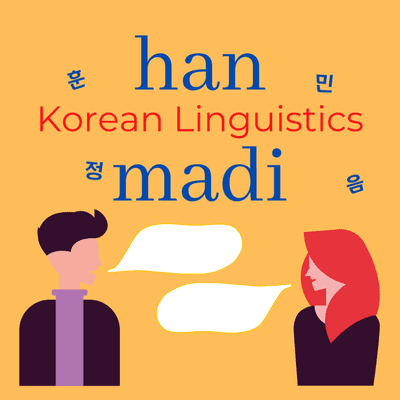
Hanmadi Korean Linguistics
Podcast de Sara McAdory-Kim and Jaymin Kim
What do Portuguese explorers have to do with the Korean word for “bread”? Why has the Korean government started using a new word for “website”? And how come there’s a different word for “house” when you’re talking about your grandmother? This biweekly podcast takes you on a deep dive into Korean linguistics through the lens of a single word per episode. Hosted by Jaymin, a native Korean speaker and history professor, and Sara, a 2nd language Korean speaker with a graduate education in linguistics.
Disfruta 90 días gratis
9,99 € / mes después de la prueba.Cancela cuando quieras.
Todos los episodios
10 episodiosWe are back after some life-induced stop-and-go, including 2/3 of our household getting COVID among several other stressful life things - thank you for your patience (and thanks especially to our guest for his patience!). --- Guest: Dr. Andrew Cheng Background: Andrew had a Fulbright teaching position in South Korea for two years after college as a native English teacher. He then went to grad school at Berkeley, studying under Dr. Keith Johnson, and got interested in sociophonetics. He wrote a dissertation on Korean Americans and bilingualism. After a postdoc at UC Irvine, he is now at Simon Fraser University. He has branched out from Korean and also studies other areas. Research: Fundamental frequency and bilingualism How do languages fundamentally differ? There’s been a lot of research on this. To some extent, it’s easy to see - e.g., Korean and English have different sounds. But what about fundamental frequency (vocal fold vibration rate - commonly thought of as pitch). How do languages differ along this axis? The study by linguist Andrew Cheng that we're talking about today looked at this aspect. Most studies compare two separate groups of people who speak each language, but what about if you look at the same people speaking two different languages - i.e., the same exact bodies (same vocal apparatus)? Pitch is the perception of the fundamental frequency. Andrew worked with 2nd- and 1.5-generation Korean Americans who learned both Korean and English simultaneously or nearly so. Korean Americans and other overseas Koreans are commonly known in Korean as gyopo. Today’s word: Gyopo 교포 People of Korean ethnicity who live in other countries - Jaymin has always conceptualized it in opposition to yuhaksaeng 유학생, study abroad students. There are stereotypes about how gyopos speak Korean (accent) in Korea, but Andrew emphasizes that the Korean they speak is totally valid and is definitely real Korean. Methods: Andrew’s paper: He interviewed the same people in both English and Korean, with an activity that served as a buffer between the two parts - just basic conversation, really. Then, he used a specific software to analyze the recordings and find which was higher/lower in fundamental frequency. There were theoretical reasons why he wanted to recruit from both 2nd and 1.5-generation Koreans, but in the end, there was no significant difference in pitch between the two groups as adults. But for all, the fundamental frequency was higher when they spoke Korean than when they spoke English. Analyzing Jaymin's Korean and English. Andrew analyzed Jaymin speaking in Korean and in English. They found that, contrary to Sara's personal perceptions, he followed the pattern of Korean being higher in pitch than English. (Jaymin didn't have exactly the same language learning profile as the participants in Andrew's research, having learned English mostly in his late teens, but it was interesting to see the pattern continue in this casual analysis.) Raising bilingual kids Jaymin and Sara discuss their experience trying (failing?) to raise a bilingual Korean-English kid, and Andrew discusses his newer work on French/English bilingualism, bilingualism and pragmatic cues, etc. Find Andrew Cheng online: @LinguistAndrew [https://twitter.com/linguistandrew] Website: http://www.sfu.ca/~aca301/ --- Follow us on social media: @HanmadiKorean [https://twitter.com/hanmadikorean] on Twitter hanmadikorean@gmail.com with any comments, questions, or requests Website: hanmadikorean.com [https://hanmadikorean.com/] --- Theme music: The Boating Trip [https://www.shutterstock.com/music/track-512897-boating-trip] by LATG Music [https://www.latgmusic.com/].
Keuriseumaseu: Syllable structure in Korean Word and meaning: 크리스마스 Keuriseumaseu means Christmas Origin: It comes from the English word Christmas Cultural Contexts: Dating etc. (see the Hanmadi post on Christmas at https://hanmadikorean.com/christmas/) Linguistic element: Syllable structure of Korean (Young-Mee Yu Cho) General syllable structure: Aslam, M., & Kak, A. (2007). English Syllable Structure. In Introduction to English Phonetics and Phonology (pp. 60-68). Foundation Books. doi:10.1017/UPO9788175968653.005 “Every language manifests a particular way of combining its sounds to form meaningful words or parts of words, called syllables. Each language puts certain restrictions on these possible combinations. For example, in English we can't have a word which begins with a consonant sequence bfj, zbf or tzp. When we analyse what restrictions (and regularities) are found in the language under study, we are studying the syllable structure of that language. We can divide words into one or more syllables. For example, tin has one syllable, brother has two, important has three and computer has four syllables each. A syllable is a group of one or more sounds. The essential part of a syllable is a vowel sound (V) which may be preceded and/or followed by a consonant (C) or a cluster of consonants (CC or CCC) (see below). Some syllables consist of just one vowel sound (V) as in I and eye/aI/, owe/ə/. In English, a syllable can consist of a vowel preceded by one consonant (CV) as in pie/paI/, or by two consonants (CCV) as in try/traI/, or by three consonants (CCCV) as in spry/spraI/. The vowel of the syllable may also be followed by one consonant (VC) as in at/æt/, or by two consonants (VCC) as in its/Its/, or by three consonants (CVCCC) as in text/tekst/or by four consonants (CVCCCC) as in texts/teksts/.” Maximal syllable shape is the syllable type that contains the most possible segments in onset and coda positions, for instance CCCVCCCC in an English word like strengths (https://digitalrepository.unm.edu/el_centro_research/5/ [https://digitalrepository.unm.edu/el_centro_research/5/]) Spanish: CCVC Japanese: CV Hawaiian: CV Really different from English. CGVC (onset consonant glide vowel coda consonant) Note how the syllabic structure is actually embedded in the writing system. 값, 삶, 없[다]: alone, only one consonant surfaces, but in certain environments, the other does as well. And additionally, some sounds can’t come at the beginning or end of a syllable. E.g., “sh” ; “ng” (as in English). And some diphthongs don’t work in Korean as single syllables. E.g., “I” Christmas: How many syllables? In English, 2. In Korean, 5. Other examples: 프렌드 friend - clusters not allowed 콩글리쉬 Konglish arbeit ice cream Sandwich Wine — Sources: Young-Mee Yu Cho. Syllable-based Phonological Processes. Lucien Brown and Jaehoon Yeon, eds. The Handbook of Korean Linguistics. Wiley; 2015. 22-40. Follow us on social media: @HanmadiKorean [https://twitter.com/hanmadikorean] on Twitter hanmadikorean@gmail.com with any comments, questions, or requests Website: hanmadikorean.com [https://hanmadikorean.com/] --- Theme music: The Boating Trip [https://www.shutterstock.com/music/track-512897-boating-trip] by LATG Music [https://www.latgmusic.com/].
Words for talking about COVID-19 in Korean As with other languages, a lot of new words have entered Korean during the pandemic, and other older words have come into wider use. New words (neologisms) can be borrowed (i.e., a word used in another language is brought into the language you’re speaking, with a similar or sometimes a somewhat different meaning); or created from “scratch” or by combining parts of other words. Some COVID-related words in Korean: 코로나 - korona - COVID-19 Korean word for quarantine: 자가격리 - jaga gyeongni - quarantining at one’s own house - literally, own house quarantining. Sino-Korean word; not newly coined, but in more frequent use. Doesn’t actually have to be at one’s own house. Korean word for mask scofflaws: 턱스크 - teokseukeu - when someone wears a mask down on their chin instead of over their mouth. Yes, these people exist everywhere! From native Korean teok 턱 + last two Koreanized syllables of 마스크, English mask Korean word for social distancing: 사회적 거리두기 - sahoejeok georidugi - social distancing - Sino-Korean + Native Korean. Essentially a literal translation Korean words for contactless/virtual things during COVID-19: 언택트 - eontaekteu - probably a new coinage for COVID - un as in English un-, tact from English contact. So no contact, basically - people used to use it a lot from things happening over Zoom rather than real life; contactless deliveries; etc. 비대면 - not face to face (literal translation) - a Sino-Korean word that has been replacing (or has replaced) 언택트 랜선여행 - laen-seon yeohaeng - virtual travel - 랜 from LAN as in the English abbreviation LAN for those really fast Internet cables (랜) + 선 line (which together mean ethernet cable in Korean) + 여행 travel Korean word for preventive measures during COVID-19: K-방역 - K-bangyeok - Korean preventive measures - K as in Korea/Korean (e.g., K-pop); the things Korea did to keep COVID from getting to crazy levels the way it did in the US and many other countries that didn’t implement such strong measures. Korean words for a future with endemic COVID-19: 위드 코로나 - wideu korona - from English, “with Corona,” as in “living with Corona” - adapting to a life in which COVID-19 is endemic 단계별 일상 회복 - dangyebol (stage by stage) 일상 (everyday life) 회복 recovery the word the government is pushing to replace 위드 코로나, essentially meaning the same thing. Do you know any other COVID-related Korean words? We’d love to hear them if so! --- Follow us on social media: @HanmadiKorean [https://twitter.com/hanmadikorean] on Twitter hanmadikorean@gmail.com with any comments, questions, or requests Website: hanmadikorean.com [https://hanmadikorean.com/] --- Theme music: The Boating Trip [https://www.shutterstock.com/music/track-512897-boating-trip] by LATG Music [https://www.latgmusic.com/].
Introduction: Guest Professor Jeff Holliday of Korea University Jeff Holliday is an assistant professor of linguistics at Korea University in Seoul, South Korea. He began learning Korean from friends he met as an undergraduate at Ohio State University, then studied the language more formally, learned about the field of linguistics, and became fascinated by Korean language acquisition, especially how people (including himself) learned to make a language’s sounds without being explicitly told how by a teacher. He pursued a doctorate in linguistics from Ohio State University and, following graduation, completed a postdoc at Indiana University Bloomington. You can find Jeff on Twitter at @jeffyholliday [https://twitter.com/jeffyholliday] and read more about him on his website [https://jjholliday.github.io/]. Many thanks to Jeff for being our first guest - it was great fun to talk to you! --- Today’s word: Sal 살 Meaning: Sal. flesh, meat, skin Related words: salgogi 살고기 - lean meat (as opposed to fatty meat) salsaek 살색 - former word for the color usually described as peach in English - means “skin color” - now salgusaek (apricot color) is used samgyeopsal 삼겹살 - delicious sliced pork belly grilled before your very eyes. Try it with wasabi, it's the new cool thing! --- Linguistic element: Perception and production of the fricative /s/ in Korean Jeff’s research on L1 and L2 Korean speakers’ perception and production of ㅅ/ㅆ - that is, lax s /s(h)/ (that h should be superscript to indicate aspiration but can't do it in this text box) and tense s /s*/ 2014 article: "The perception of Seoul Korean fricatives by listeners from five different native dialect and language groups" [https://doi.org/10.1075/kl.16.2.01hol] Can speakers distinguish between ㅅ (si-ot) and ㅆ (ssang si-ot)? (pronounced something like shee-ote) This article looked at L1 Seoul Korean speakers, L1 Gyeongsang Korean speakers, L1 Jeju Korean speakers, L1 Mandarin Korean learners, L1 Japanese Korean learners. (L1 = first/native language. L2 = second language) How do Gyeongsang speakers compare with nonnative Korean speakers? Stereotype: Gyeongsang Korean lacks differentiation between ㅅ and ㅆ (both realized as ㅅ) But actually - No one is completely sure if Gyeongsang speakers neutralize the s(h)/s* contrast - or at lest which ones do Fricatives: near closures - the air doesn’t stop flowing while you’re making the sound. As opposed to m and p, or t and k, where there’s a complete closure and a release. S, ch, h are fricatives in Korean - near closures. Participants: 5 groups: Seoul KL1, Jeju KL1, Daegu KL1, Mandarin KL2, Japanese KL2 - 20 each Methods: Non-words made from words recorded by Seoul speakers Minimal pair test and CV test Minimal pairs: native listeners nearly at ceiling, nonnative near chance, very little variation within each group CV test: Also a clear difference between native/nonnative speakers Vowel context was a main effect, with native language also making a difference when combined with vowel context. No significant difference between Mandarin and Japanese. No meaningful difference between dialect groups. Young listeners from Daegu can differentiate the two sounds just as accurately as Seoul can. Mandarin and native Japanese novice learners both unskilled at differentiating. Vowel heights: ALL groups were more accurate in low vowels like /a/ than in high vowels like /i/ - acoustic cues like aspiration weaker in the /u/ and /i/ contexts. Because L1 listeners only had poor accuracy before /u/ and /i/, vowel height might be the best predictor of ID accuracy. Possibly related to aspiration (release of air). 2020 article: "Non-word repetition may reveal different errors in naive listeners and second language learners" [https://doi.org/10.13064/KSSS.2020.12.1.001] (with Minkyoung Hong) Previously: Jeff did an experiment as part of doctoral research where he asked nonnative speakers “what does this (Korean) sound sound like in your language?” Some other work during his dissertation: Aspiration is a major clue for native speakers in distinguishing between same place of articulation fricatives (eg ㅅ/ㅆ), so when it’s gone, they have trouble sometimes - but nonnative speakers of Korean, unless they’ve learned explicitly or implicitly that they need to listen for the aspiration, they might have trouble a lot of the time. However, the Mandarin L1 speakers who didn’t know Korean placed the ㅅ and ㅆ into totally different categories that align with Mandarin phonology (one as an affricate). (This study was only Mandarin L1 speakers who didn’t know Korean.) Similarly, in 2020 study, L1 Korean speakers perceived the L1 Mandarin speakers’ production of ㅅ (?) as an affricate (i.e., “ch” sound) Results: Support the idea that naive perception can be quite different from learners with just a few weeks of experience. Highlights need to understand reasons that perceptual assimilation of non-native segments might change after only a brief period of exposure to the language. You'll have to listen for more on the 2020 article because my note-taking failed here. Please note that any errors in these shownotes are due to me (Sara), compounded by pressures of life and time. We also veer off into musings about the effects of writing systems/romanization on the phonology of language learners. Thanks again, Jeff! --- Follow us on social media: @HanmadiKorean [https://twitter.com/hanmadikorean] on Twitter hanmadikorean@gmail.com with any comments, questions, or requests Website: hanmadikorean.com [https://hanmadikorean.com/] --- Theme music: The Boating Trip [https://www.shutterstock.com/music/track-512897-boating-trip] by LATG Music [https://www.latgmusic.com/].
Main word: 바바리: Trenchcoat. Comes from the brand, Burberry, of English coats and other such items. Spin-off word, babari maen ("Burberry Man"): A flasher Linguistic element: Proprietary eponyms/genericized trademarks Brand names that become widely used by people to mean any of that type of product. (Sometimes still legally protected, sometimes they lose legal protection due to genericization.) Eg in English: Kleenex (actually still protected legally), Bandaid (also still legally trademarked), Aspirin Dry ice, escalator, laundromat - also genericized trademarks, which I didn't even realize because they're so common now and I guess this happened before our time. Other genericized trademarks in Korean. There are many more and I think it’s kind of interesting, so I’ve already named this part 1 and will do part 2 down the road. 매직 (permanent marker)? Sidney Rosenthal in the 50s, felt or other pressed fibers with own ink source, now used for all kinds of markers from highlighters to sharpies for permanent erase markers. I think in the US this was identified with crayola to me. 요플레: Yoplait. Yoghurt. This is a brand name in the US but it’s not a genericized trademark here I don’t think. 지프 (SUV): Jeep. An SUV, but any SUV. Again, a brand name in the US but not genericized trademark here, at least, not for SUVs. They’ve had to take specific action to protect it though. In Ireland, all SUVs also called jeeps. 맨투맨 (crewneck sweater/sweatshirt) 대일밴드 (band aid) sometimes just 밴드 ------- Follow us on social media: @HanmadiKorean [https://twitter.com/hanmadikorean] on Twitter hanmadikorean@gmail.com with any comments, questions, or requests Website: hanmadikorean.com [https://hanmadikorean.com/] ------- Theme music: The Boating Trip [https://www.shutterstock.com/music/track-512897-boating-trip] by LATG Music [https://www.latgmusic.com/].
Disfruta 90 días gratis
9,99 € / mes después de la prueba.Cancela cuando quieras.
Podcasts exclusivos
Sin anuncios
Podcast gratuitos
Audiolibros
100 horas / mes
